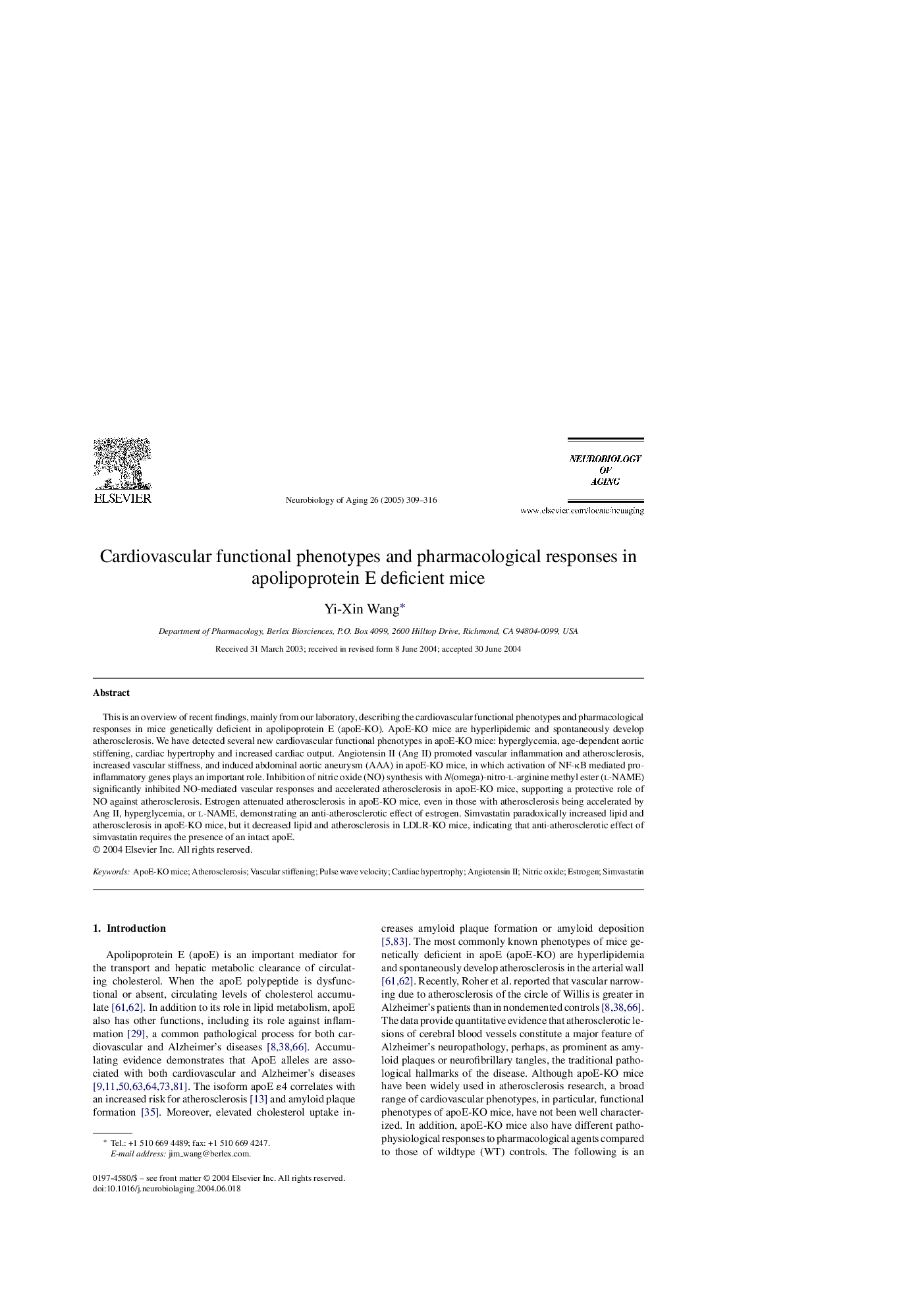| کد مقاله | کد نشریه | سال انتشار | مقاله انگلیسی | نسخه تمام متن |
|---|---|---|---|---|
| 9645143 | 1433684 | 2005 | 8 صفحه PDF | دانلود رایگان |
عنوان انگلیسی مقاله ISI
Cardiovascular functional phenotypes and pharmacological responses in apolipoprotein E deficient mice
دانلود مقاله + سفارش ترجمه
دانلود مقاله ISI انگلیسی
رایگان برای ایرانیان
کلمات کلیدی
موضوعات مرتبط
علوم زیستی و بیوفناوری
بیوشیمی، ژنتیک و زیست شناسی مولکولی
سالمندی
پیش نمایش صفحه اول مقاله

چکیده انگلیسی
This is an overview of recent findings, mainly from our laboratory, describing the cardiovascular functional phenotypes and pharmacological responses in mice genetically deficient in apolipoprotein E (apoE-KO). ApoE-KO mice are hyperlipidemic and spontaneously develop atherosclerosis. We have detected several new cardiovascular functional phenotypes in apoE-KO mice: hyperglycemia, age-dependent aortic stiffening, cardiac hypertrophy and increased cardiac output. Angiotensin II (Ang II) promoted vascular inflammation and atherosclerosis, increased vascular stiffness, and induced abdominal aortic aneurysm (AAA) in apoE-KO mice, in which activation of NF-κB mediated pro-inflammatory genes plays an important role. Inhibition of nitric oxide (NO) synthesis with N(omega)-nitro-l-arginine methyl ester (l-NAME) significantly inhibited NO-mediated vascular responses and accelerated atherosclerosis in apoE-KO mice, supporting a protective role of NO against atherosclerosis. Estrogen attenuated atherosclerosis in apoE-KO mice, even in those with atherosclerosis being accelerated by Ang II, hyperglycemia, or l-NAME, demonstrating an anti-atherosclerotic effect of estrogen. Simvastatin paradoxically increased lipid and atherosclerosis in apoE-KO mice, but it decreased lipid and atherosclerosis in LDLR-KO mice, indicating that anti-atherosclerotic effect of simvastatin requires the presence of an intact apoE.
ناشر
Database: Elsevier - ScienceDirect (ساینس دایرکت)
Journal: Neurobiology of Aging - Volume 26, Issue 3, March 2005, Pages 309-316
Journal: Neurobiology of Aging - Volume 26, Issue 3, March 2005, Pages 309-316
نویسندگان
Yi-Xin Wang,